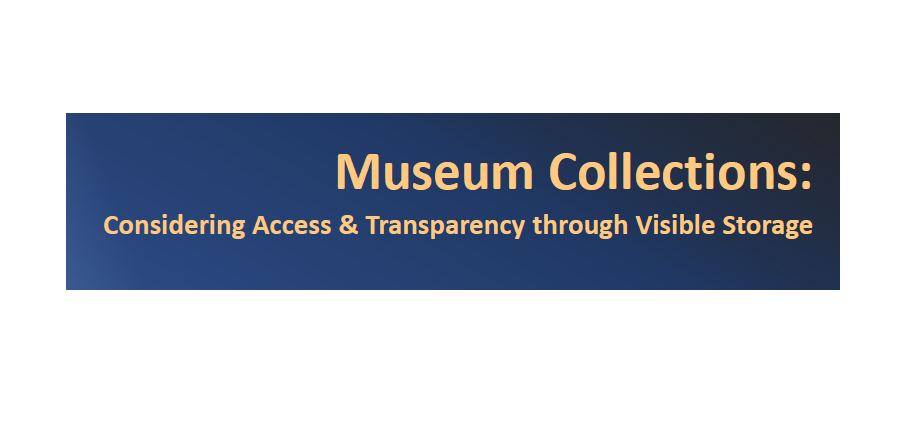Nov 9 webinar – Museum Collections: Considering Access & Transparency through Visible Storage

In recent years, museums have increasingly turned to open storage techniques to display parts of their collection which would otherwise not be on public view. Though this approach still feels somewhat radical, the concept of visible storage in museum practice started at the University of British Columbia’s Museum of Anthropology in the 1970’s and, in the intervening decades, has expanded and evolved with examples seen around the world. Recently, significant new “open storage” projects have appeared regularly, notably the Depot Boijmans van Beuningen which opened in Rotterdam in 2021 and the Victoria & Albert’s new East Storehouse in Stratford, east London, slated to open in 2024. The foundations for this decades-long trend are found in the impulse to democratize museums and to make available the depth and breadth of collections typically hidden away in museum vaults. The increased transparency that visible storage brings to museums has been touted as one way to make collections more accessible to their communities.
For this conversation on open and visible storage in museums, the University of Michigan’s Museum Studies Program is delighted to welcome Susan Rowley, Director, Museum of Anthropology, University of British Columbia, and Bridget Callahan, Luce Foundation Center Program Coordinator, Smithsonian Institution. Guided by these two museum professionals, we will explore the history of “visible” collections storage and how technology and new considerations of democratized access have changed the design and use of museum holdings. Questions of ethics, equity, standards of care, and programming will also be addressed.
Panelists:
Bridget Callahan – Coordinator, Luce Foundation Center Program, Smithsonian Institution (Washington, D.C.)
Susan Rowley – Director, Museum of Anthropology, University of British Columbia (Vancouver, Canada)
Moderator:
Deirdre Hennebury, Associate Director, UM Museum Studies Program
Registration for this webinar is required.
This panel discussion will be presented online via Zoom and will feature real time captioning.


